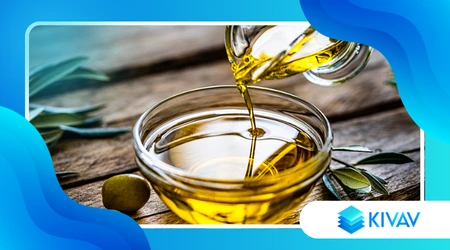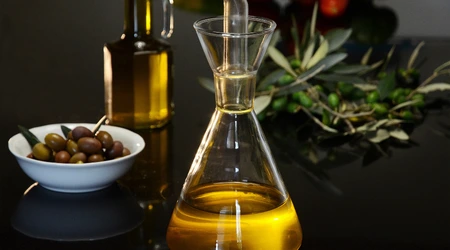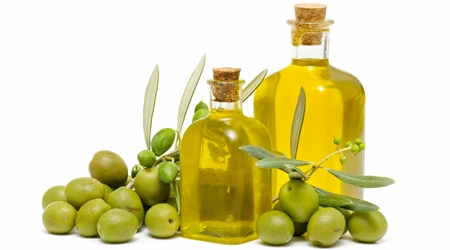Italian extra virgin olive oil: how to choose the right one for every recipe

Italian extra virgin olive oil It is the beating heart of Mediterranean cuisine, a symbol of tradition and quality.
Announcements
It's not just a condiment, but an ingredient that transforms dishes, enhancing flavors and aromas.
Choosing the right oil, however, requires attention: each variety has unique characteristics that are suited to specific culinary preparations.
In this article, we will explore how to select Italian extra virgin olive oil perfect for every recipe, with practical advice and up-to-date information.
From cultivars to certifications, we'll guide you on a journey through mills and flavors. Are you ready to discover how a drizzle of oil can make all the difference?
Announcements
Get ready to transform your kitchen with an ingredient that tells the story of Italy.
The richness of Italian cultivars
Italy boasts over 500 olive cultivars, each with distinctive characteristics. The variety influences the flavor, from fruity to spicy.
The Leccino cultivar, widespread in Tuscany, offers a delicate flavor, ideal for salads. In contrast, the Coratina variety from Puglia offers a bold aftertaste, perfect for hearty dishes.
Knowing the cultivars helps you choose Italian extra virgin olive oil suited.
Each region produces unique oils: Liguria offers a smooth Taggiasca, while Sicily boasts an intense Nocellara. The differences arise from the soil and climate.
++ Parma Ham DOP: history, production, and recommended pairings
For example, an Umbrian Frantoio oil is distinguished by herbaceous notes, excellent for soups. The choice depends on the dish: reading the label is essential to identify the cultivar.
According to the International Olive Council, Italy produces 151 TP3T of the world's extra virgin olive oil (2024 data). This heritage requires careful selection.
Not just any oil will do: a single-variety oil can elevate a bruschetta, while a blend is perfect for light frying. Explore the cultivars to discover your ideal oil.

How to read the label: certifications and origin
A clear label is the key to choosing Italian extra virgin olive oil quality. Look for designations like DOP or IGP, synonymous with authenticity.
The DOP designation guarantees traditional provenance and methods, like Chianti Classico oil. Always check the origin: an Italian 100% oil is a guarantee.
Acidity, never exceeding 0.8%, defines an authentic extra virgin. A lower value indicates superior quality, such as 0.3% for premium oils.
See also: Type 00, Manitoba, and Semolina Flour: Which One to Use and When
The label must indicate the harvest year: an oil from 2024 is fresher. Avoid products with vague information, which hide blends of dubious origin.
Traceability is crucial: a QR code on the label often links to the mill. This ensures transparency and promotes small producers.
An oil with organic certification also guarantees the absence of pesticides. Read carefully to avoid scams and choose an excellent product.
The role of taste in choosing oil
The taste of Italian extra virgin olive oil It varies from light to intense, influencing the pairing with dishes. A light, fruity oil enhances steamed fish.
Intense oils with bitter notes pair well with grilled meats. Tasting the oil pure helps you understand its aromatic profile.
A spicy oil, like that of the Peranzana cultivar, livens up a legume soup. For desserts, a smooth oil like Taggiasca adds elegance.
Balance is essential: too strong an oil will overpower delicate flavors. Test it on bread to assess its personality.
Matching flavors and recipes is an art. A herbaceous oil enhances raw vegetables, while a balanced blend is versatile for sauces.
Experiment with small amounts to find the perfect combination. The right flavor can transform a simple dish into a culinary masterpiece.
Production methods and quality
The quality of Italian extra virgin olive oil It depends on the production. Hand-picking preserves the integrity of the olives, guaranteeing a superior oil.
Milling within 24 hours of harvesting preserves freshness and nutritional properties. Modern mills use cold-press technology.
Cold pressing, below 27°C, preserves antioxidants and polyphenols. Hot-pressed oils lose their flavor and benefits.
Small producers often favor artisanal methods, while large companies focus on volumes. Both can offer quality, if certified.
A practical example: a cold-pressed Tuscan oil enhances a ribollita with herbaceous notes.
Organic production, expected to grow by 10% in 2024 (ISMEA data), responds to the demand for sustainability. Choose oils produced using transparent methods for an authentic and healthy product.
Perfect pairings for every recipe
Choose Italian extra virgin olive oil A recipe requires strategy. A delicate oil, like Garda DOP, enhances fish carpaccio.
For roasts, a robust oil like Puglia's Coratina adds character. This pairing elevates the flavor experience.
For example, an arugula and parmesan salad calls for a medium-fruity olive oil, like Frantoio. For desserts, like an olive oil cake, use a sweet Sicilian olive oil.
Avoid overly intense oils in light dishes: balance is everything. Experiment to find harmony.
The versatility of Italian olive oil is unparalleled. An Umbrian blend is perfect for pizza and focaccia, while a Sicilian monocultivar shines on shellfish.
Consider the structure of the dish: light oils for subtle flavors, intense oils for bold flavors. The right choice enhances every bite.
Preservation and freshness: the secrets to perfect oil
The freshness of Italian extra virgin olive oil It's crucial for flavor. Store it in dark bottles, away from light and heat. The ideal temperature is 15-18°C; avoid hot kitchens. A well-stored oil lasts up to 18 months.
Oxidation is the enemy of oil. Use airtight containers and consume within six months of opening. Rancid oil loses its aroma and benefits.
For example, a fresh oil enhances a Caprese salad, while an aged one ruins it. Always check the production date.
One tip: buy small quantities to ensure freshness. Canned oils retain their properties better than clear bottles.
Proper storage preserves polyphenols and flavor, making each dish a unique experience. Don't underestimate the importance of well-preserved oil.

Italian oils and sustainability: the future of the sector
The production of Italian extra virgin olive oil Embrace sustainability. Many mills use renewable energy, reducing their environmental impact.
Organic farming is growing, with 20% of certified olive groves (2024 data, Coldiretti). Quality meets ethics.
Precision irrigation and sustainable mechanized harvesting preserve the soil. Small producers invest in recyclable packaging, such as glass bottles.
A sustainable oil, like that of the Sabina DOP Consortium, supports the environment and local communities.
Choosing sustainable oils means supporting the future. For example, Sicilian organic olive oil on bruschetta promotes flavor and responsibility.
Consumer awareness is driving the market toward green practices. Opt for brands that tell their eco-friendly story.
Table: Quick guide to pairing extra virgin olive oil
| Dish | Type of oil | Recommended cultivar | Characteristic |
|---|---|---|---|
| Green salad | Light fruity | Taggiasca | Delicate, soft |
| Grilled meat | Intense fruity | Coratina | Spicy, robust |
| Steamed fish | Medium fruity | Leccino | Balanced, herbaceous |
| Sweets (e.g. cake) | Sweet fruity | Nocellara | Soft, fruity |
| Legume soup | Medium-intense fruity | Peranzana | Bitter, structured |
Conclusion
Italian extra virgin olive oil It's more than an ingredient: it's a story of territories, traditions, and passion.
Choosing the right oil means knowing the cultivar, origin, and flavor, carefully pairing it with each recipe.
From summer bruschetta to winter soup, a quality olive oil transforms every dish into a unique experience. Imagine a drizzle of oil like an artist's brushstroke: the wrong choice clouds the canvas, the right one makes it unforgettable.
In 2025, sustainability and traceability will drive the market, rewarding attentive producers and aware consumers.
Explore, taste, experiment: the next dish could be your masterpiece, thanks to the perfect Italian extra virgin olive oil.
Frequently Asked Questions
What is the difference between extra virgin olive oil and olive oil?
Extra virgin olive oil is obtained from the first cold pressing, with a maximum acidity of 0.81 TP3T. Olive oil is a refined, less valuable blend.
How to recognize a quality oil?
Look for DOP/IGP certifications, low acidity, and provenance. Taste to check for freshness and aromatic notes. The label should be clear.
Can I use extra virgin olive oil for frying?
Yes, Italian extra virgin olive oil It's ideal for light frying thanks to its high smoke point (around 190°C). Choose an economical blend.
How long does opened oil last?
An opened oil lasts about six months if stored properly. Use dark bottles and keep it cool to preserve its qualities.
